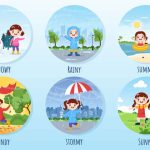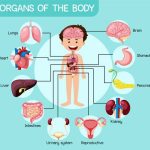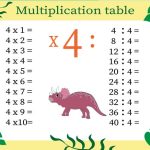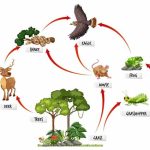An easy way to introduce your preschooler to the world of science is through leaves that fall off the trees. It’s a great way to offer them exposure and experience and kindle an interest in science. Preschoolers can learn all about leaf colours and how the changing seasons change the colour of leaves, they can compare different types of leaves, their texture and shape and so much more. And it’s a win-win situation for everyone as preschoolers simply love the outdoors and it is a wonderful way to explore nature with them. They develop a greater appreciation for nature and start realising the importance of preserving it.There are a plethora of activities with leaf shapes for kids, a few of which we will touch upon.
Activities to Explore Leaf Shapes and Textures with Preschoolers
Nature Walks:-
Preschoolers can be taken for a walk in the garden or neighbourhood park with a bag or bucket to collect fallen leaves. You could ask them to collect different kinds of leaves as they find them. Look at the leaves along with the kids and ask them to compare the different types of leaf shapes, textures, sizes and colours. You could also ask them to identify the different colours and ask questions like, “How does it feel? What is their shape?”
Leaf Rubbing:-
This activity is adored by preschoolers and they can spend several happy hours doing it. Gather some leaves, crayons, tape and a piece of paper. Take a leaf and tape it in place on the paper. Take a matching crayon, turn the paper over so that the leaf is at the back of the paper and rub the crayon over the paper. Children get very excited as a leaf shape gradually appears. Remove the leaves from the paper when you are done. Do this with a few leaves with different shapes of leaf edges and teach them different leaf shape names. They begin to notice the difference between different sized leaves and develop an appreciation for patterns and designs that they can make with them.
Sorting;-
Preschoolers can be asked to sort leaves by size, shape and colour. Ask them to explain how they sorted the leaves.
Leaf Collages:-
To make a leaf collage, you’ll need different leaves of different shapes, colours and textures. Arrange them on a piece of canvas or paper and either glue or tape them in a beautiful design. Preschoolers have the time of their lives as they experiment with different patterns and arrangements and it is a great way to connect with nature.
Garden Math:-
Preschoolers can be taken out to the garden and asked to count the number of leaves on a vine. They can do this with leaves of different shapes and textures to practise their counting and maths skills.
Advantages of Exploring Leaf Shapes and Textures Through Play
- By exploring different types of leaf shapes, textures and colours, preschoolers develop different art techniques like leaf rubbing.
- They also learn to recognise a few trees and also learn about the parts of a leaf. It enhances vocabulary and they learn words like tip, blade and veins. When they are exposed to different textures and shapes, it gives parents a pathway to provide linguistic input. A parent can tell a child, “This leaf feels so soft and silky.” By touching different textures, children get a much better understanding of the world around them. They learn how to communicate and share their experience with others. Leaf play is by far the best way for children to get familiar with textures like smooth, soft, rough and crunchy. As they build a mountain of leaves, they learn the amount of pressure needed to push or pick up leaves.
- Touching leaves with different textures boosts their fine motor skills and bilateral coordination. They may rub other textures like tree bark and compare it to rough textured leaves.
- Through exploring textures, children get familiar with the concepts of soft, rough, sticky, prickly and silky and experience how it feels against the skin. Different shapes of leaf edges teach them words like ‘smooth’, ‘rough’ or ’jagged’. They also learn leaf shape names like ‘long’, ‘round’ or ‘small’. Even before they get fluent with verbal communication, they develop preferences for different textures and tactile sensations.
- It also aids in muscle grading which is the ability to apply harder or softer pressure with the pencil while colouring and improves good pencil grasp.
- It enhances hand strength and endurance developing the larger motor skills.
- By staying close to nature, preschoolers not only develop fine motor skills but also get a glimpse into the concept of cause and effect — the first step to a scientific mind.
- Attention span, concentration and observation skills are enhanced when children touch and describe different textured leaves. Children are very sensitive to tactile sensory input and their world depends on their physical experience of it. Jumping into the huge pile of leaves, running into leaves or throwing them in the air, is not only fun but also a vital part of developing their sensory systems.
- Preschoolers learn to work independently and develop confidence through experimentation.
- Critical and creative thinking skills are enhanced.
- Preschoolers understand how natural materials can be used for art.
A much better understanding of nature is formed as preschoolers experiment with and explore new textures and shapes of leaves. There can be no better learning experience for them than being one with nature. Apart from these advantages, it’s fantastic for their overall development. New neural connections are formed in their brains which gives a great boost to the learning curve. They begin to notice the seasonal changes in leaves which not only broadens their mental horizons but also enhances their overall cognitive development. It keeps preschoolers purposefully engaged while instilling a love for nature at the same time. Contacting EuroKids would go a long way if you are looking for more insight to help enhance these essential qualities in your child.
















